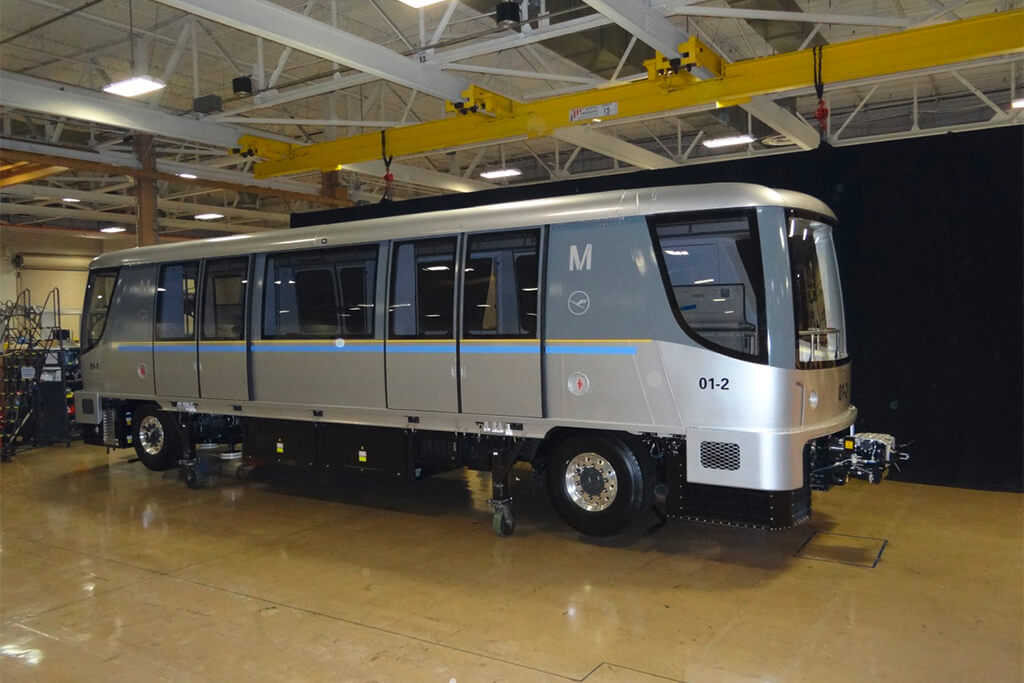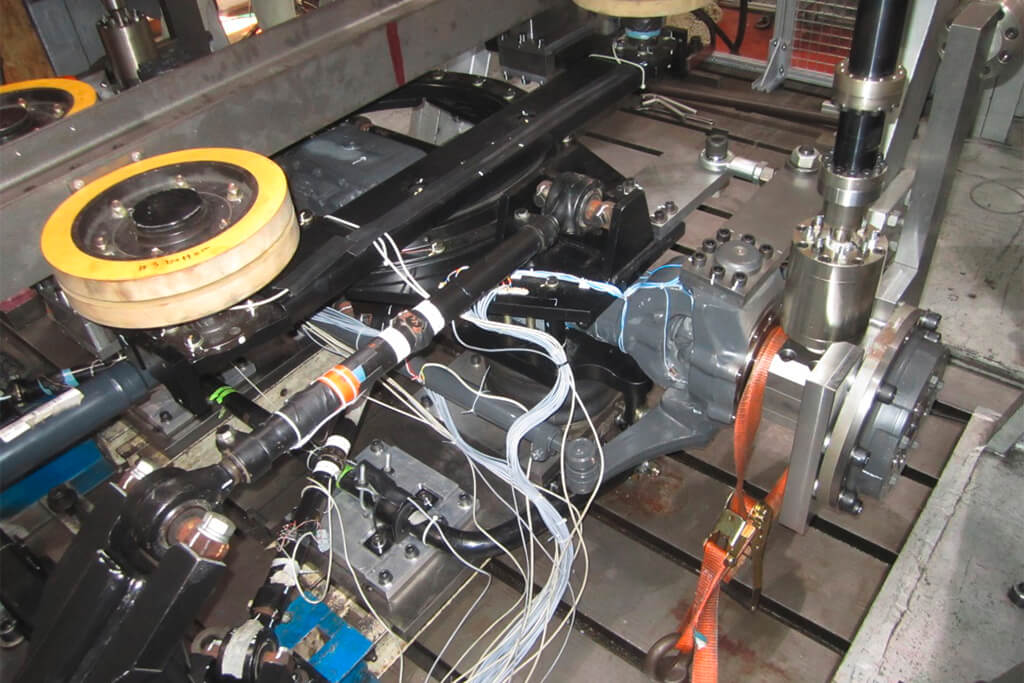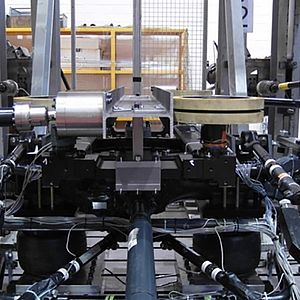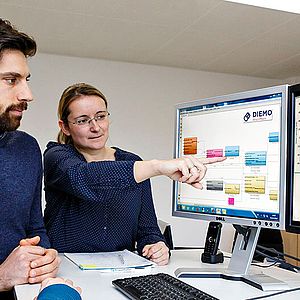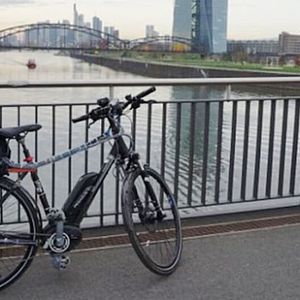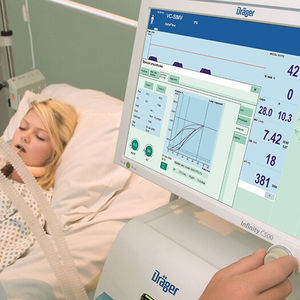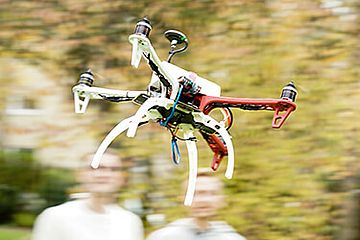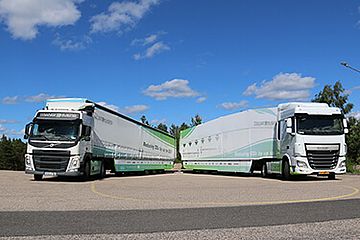Stress analysis on the chassis of a passenger transport system at Munich airport
Driverless Passenger Transport System, Driving Measurement, Technology Consulting
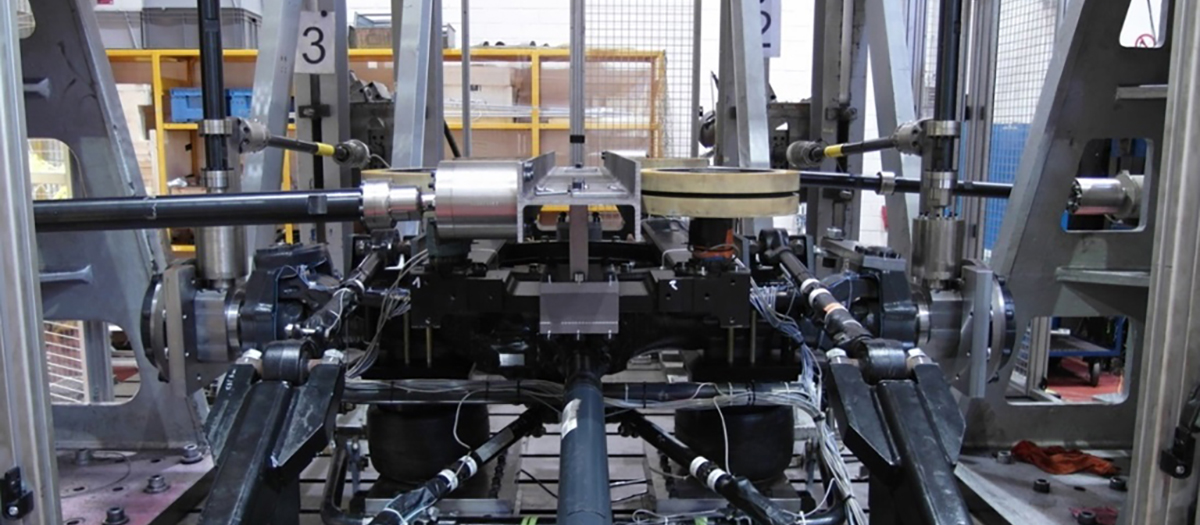
A stress analysis for the chassis, specifically with regard to the conditions in use, had to be prepared for the operating license and regulatory approval of the new INNOVIA APM 300 driverless passenger transport system from Bombardier Transportation. The vehicle consists of a body in the style of a commuter train with a conventional pneumatic-tired chassis from the commercial vehicle sector. This is supplemented by a specially designed guidance system with which the steering and lateral forces are transmitted to a guide rail.
5. Special use of the axle system in this transport system differs fundamentally from the usual applications of the basic axle. The maximum load is also significantly higher. As a result, Fraunhofer LBF had to redefine all the load assumptions and the lifetime requirement. It was not possible to refer to standards for either the design concept or the strength test. First of all, measurements were taken on a test track of the manufacturer under all typical operating conditions (e.g. cornering, braking, switch travel) in order to analyze and describe the operational use. In this case, mainly wheel forces and local component stresses were determined. From this and based on the route and operating plan of the Munich track under construction, it was possible to synthetically model the existing loading scenario and to define the lifetime requirements as the basis for the stress analysis including statistical safety margins. Later, these preliminary specifications were verified by further measurements on the original track with a production vehicle.
Individuelle Individual test equipment for realistic simulation
The experimental lifetime verification was carried out in the structural durability laboratory of Fraunhofer LBF. A complete axle assembly was set up on a servohydraulic strength rig, which had been individually converted for this purpose, and was realistically loaded on the wheels and the guide equipment with six hydraulic cylinders. The load sequence for this was obtained from the measured data by combining a balanced mix of all the typical driving conditions as a time-lapse load sequence. As a result, it was possible to simulate the desired vehicle lifetime of 30 years in daily use on the test rig within a few months. The assembly was taken apart after the test. On all components, it was possible to verify using the dye penetrant method that no relevant damage or cracks had occurred.
Excellent technology consulting
The whole verification process was supervised and checked by external experts on behalf of the licensing authority. In an in-house proposal procedure, the project was honored and awarded a prize by the management board of the Fraunhofer-Gesellschaft for the in-depth technology consulting..
Customer benefits
Customer benefits: The project enabled the vehicle manufacturer Bombardier Transportation to clearly define the very individual operating requirements and to verify the lifetime of the entire assembly under exactly these conditions in a test specially designed for this purpose. The derivation withstood a thorough regulatory appraisal.

Contact
- Andreas Herbert
- Phone: +49 6151 705-279
- Andreas.Herbert@lbf.fraunhofer.de
